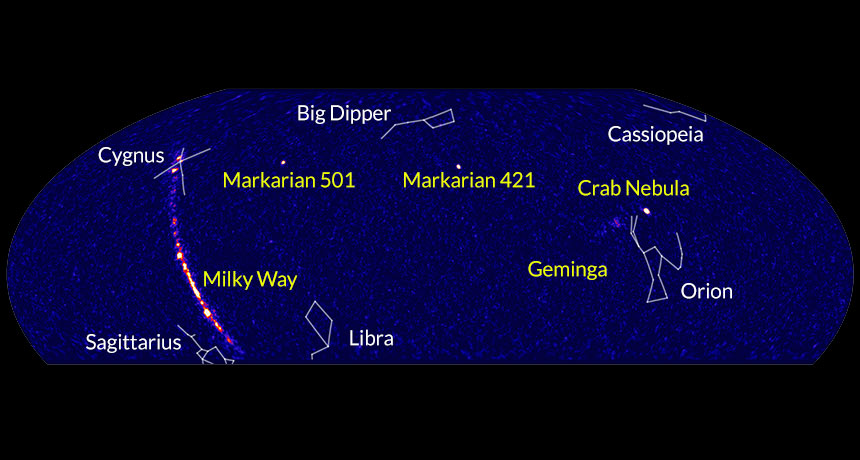New sky map charts previously unknown gamma-ray sources

SALT LAKE CITY — A new map of the sky charts the origins of some of the highest energy photons ever detected. Researchers from the High-Altitude Water Cherenkov Observatory released their first year of observations of gamma rays, ultrahigh-energy light particles blasted in our direction from some of the most extreme environments in the universe.
The researchers found 40 gamma-ray sources, a quarter of which hadn’t previously been identified, they reported April 18 at an American Physical Society meeting. The map is “revealing new information about nature’s particle accelerators,” said Brenda Dingus, a leader of the HAWC collaboration. These accelerators include the relics of dead stars, such as supernova remnants, and active galaxies that shoot out blasts of particles, known as blazars.
From its perch on the edge of a dormant volcano in Mexico, HAWC detects gamma rays using 300 tanks of water, which cover an area the size of four football fields and register faint light signals from showers of particles produced when gamma rays slam into Earth’s atmosphere.
The team found new sources in areas that had already been searched by other high-energy gamma-ray telescopes. “That’s a little perplexing,” said Dingus. The discrepancy could be due to the fact that HAWC observes higher energy gamma rays, or that the sources are too spread out for the other telescopes to find.
In a region near a previously known gamma-ray source, the scientists found two other potential sources. They nicknamed the group “the executioner” — the bright gamma ray hot spots in the map bore some resemblance to a sinister human figure. If the name sticks, Dingus said, “it would be the first gamma-ray constellation.”